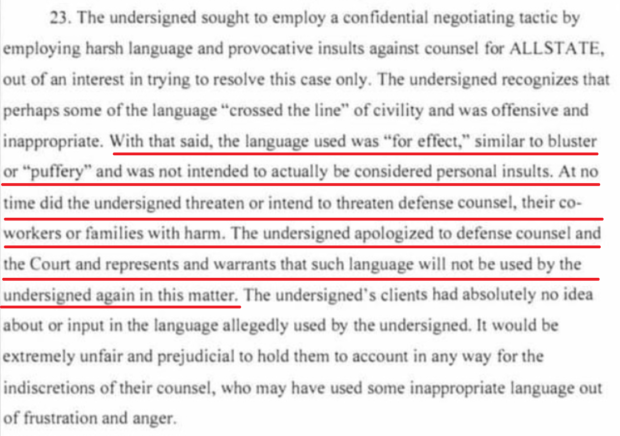What a fantastic morning! Friday’s questions are here. The answers follow today’s honor roll.
Honor Roll
- Karen Allen, Esq.
- Matthew Anderson, Pratt Vreeland Kennelly Martin & White
- Evan Barquist, Montroll Backus & Oettinger
- Penny Benelli, Dakin & Benelli
- Erin Gilmore, Ryan Smith & Carbine
- Bob Grundstein, Esq.
- Keith Kasper, McCormick, Fitzpatrick, Kasper & Burchard
- Thomas Kester, Assistant General Counsel, Blue Cross & Blue Shield of Vermont
- Elizabeth Kruska & Wesley Lawrence
- John Leddy, McNeil, Leddy, & Sheahan
- Pam Loginsky, Washington Association of Prosecuting Attorneys
- Lon McClintock, McClintock Law Offices
- Jack McCullough, Project Director, Vermont Legal Aid Mental Health Law Project
- Rob McDougall, Assistant Attorney General; Chief -Environmental Protection Division
- Hal Miller, First American
- Kristen Shamis, Monaghan, Safar, Ducham
- Robyn Sweet, CORE Registered Paralegal, Cleary Shahi & Aicher
- Jonathan Teller-Elsberg, Vermont Law School, JD Candidate
- Jason Warfied, Vermont Law School, JD Candidate
- Jack Welch, Esq.
- Thomas Wilkinson, Jr., Cozen O’Connor
Answers
Question 1
At a CLE, visions of sugarplums distract you. Yet, you vaguely hear me say something to the effect of “the rule relaxes the duty of loyalty owed to that person, but not the duty to maintain that person’s confidences.”
When I said, “that person,” I was referring to:
- A. a client who sues a lawyer for malpractice.
- B. a client who files a disciplinary complaint against a lawyer.
- C. a prospective client who met with but did not retain a lawyer. See, V.R.Pr.C. 1.18
- D. all of the above.
Question 2
Attorney called me with an inquiry. I listened, then replied, “the rule requires you to take reasonable remedial measures. A comment to the rule says that the first step is to remonstrate with your client.”
Given my response, it’s most likely that Attorney called because Attorney:
- A. Learned that Client had presented false evidence to a tribunal. See, Rule 3.3 and my blog post “Lawyer’s duty upon learning that a client or witness lied.”
- B. Received information from opposing counsel that she reasonably believes opposing counsel inadvertently produced.
- C. Discovered that her law firm previously represented the other party in a substantially related matter.
- D. Communicated with a represented person without the consent of that person’s lawyer.
Question 3
Lawyer called me with an inquiry. I listened, then said “yes, for the sole purpose of paying service charges or fees on the account, and only in an amount necessary for that purpose.”
What did Lawyer call to ask?
Whether Lawyer could deposit Lawyer’s own money into Lawyer’s client trust account. See, V.R.Pr.C. 1.15(b).
Question 4
Rule 3.4(a) prohibits a lawyer from unlawfully obstructing another party’s access to evidence or unlawfully altering, destroying or concealing material that has potential evidentiary value.
Earlier this week, some other lawyers and I met with the lawyers participating in the VBA’s Incubator Program. Among other things, we discussed the legal ethics of social media. We mentioned that, generally, a lawyer does not violate Rule 3.4 by advising a client to delete or “take down” information from social media, so long as ____________________.
- A. the conduct does not constitute spoliation of evidence.
- B. the conduct is not otherwise illegal.
- C. the lawyer takes appropriate action to advise the client to preserve the information should it become discoverable or relevant.
- D. All of the above. Many advisory ethics opinions have reached this conclusion. Among them, the Pennsylvania Bar Association’s Formal Opinion 2014-300.
Question 5
There’s a holiday movie that involves questionable conduct by the prosecutor, defense attorney, and judge.
The movie focuses on Kris, a seasonal employee at a department store in New York City. Kris got into hot water after whacking a fellow employee over the head with an umbrella. Soon thereafter, the state initiated involuntary commitment proceedings. The prosecutor’s entire case rested on Kris’s claims to be someone who, according to the state, did not exist.
Fred represented Kris. He did so as much for his romantic interest in Doris, Kris’s boss, as for his interest in providing Kris with competent and diligent representation.
In the end, Judge Henry X. Harper refused to commit Kris. His decision was based on several factors, including:
- a politician’s ex parte communication to the judge that the judge would certainly lose his re-election bid if he ruled that the person Kris claimed to be did not exist; and,
- 21 bags of “dead letters” addressed to the person who Kris claimed to be. The United States Post Office delivered them to Kris at the courthouse during the hearing.
Judge Harper concluded that if the federal government (the Post Office) agrees that Kris is who he claims to be, then the state has no business saying otherwise.
Following the hearing, Fred asked Doris to marry him.
In the movie, who does Kris claim to be?
Santa Claus (the movie is Miracle on 34th Street)








